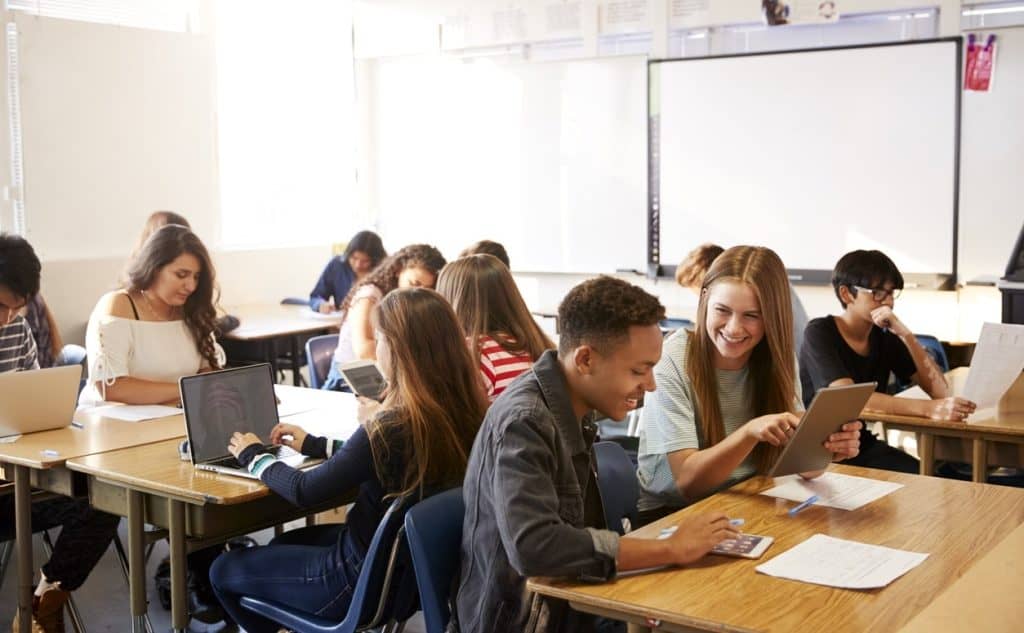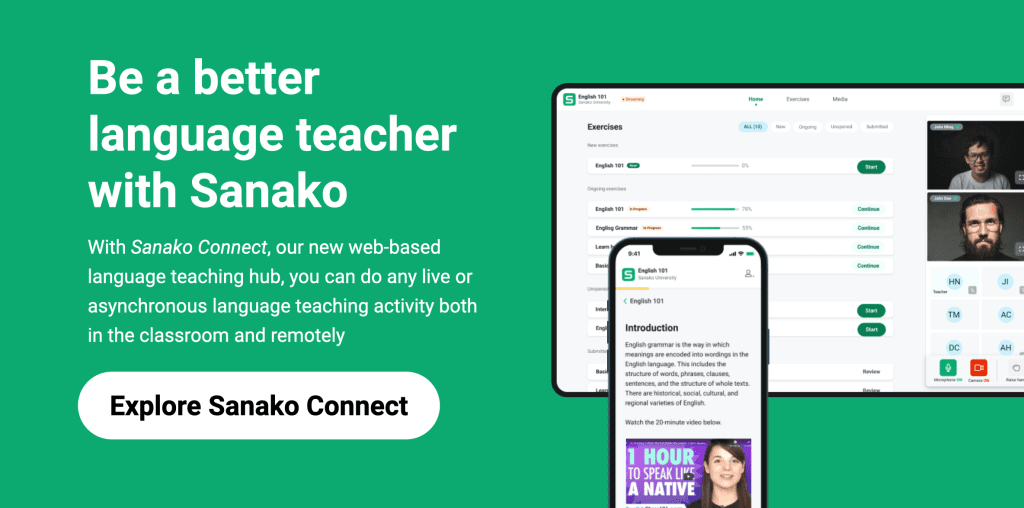Motivation plays a key role in all facets and types of learning. But it’s perhaps most important in language learning, where progress can be difficult to see on a day-to-day basis. Learners with a positive attitude to their course and their studies are more likely to continue working hard and to keep going when times are tough. Although not everyone who is motivated to learn does eventually achieve their goal, many learners who do are frequently highly motivated individuals.
Maintaining high levels of student motivation is vital for language educators. Reeve (1996) confirms that: “Student motivation is influenced by both internal and external factors that can start, sustain, intensify, or discourage behaviour.” Sparking these elements into life is therefore a key part of the teacher’s role, but how can you do this regularly and effectively?
This blog post describes 7 effective strategies for inspiring students and maintaining their motivation for learning new languages.
1. Understand your students’ motivations
In order for an educator to motivate a student, it’s important that they understand the learner’s motivation for learning languages in the first place. The extensive research investigating the link between language learning and motivation identifies two main types of motivation. Some learners have an intrinsic motivation for learning – they want to learn a language because of an internal force to do so. Usually they have an interest in the language or they just love learning or are perhaps more open to self-improvement.
On the other hand, extrinsic motivation is powered by an external source. Learners are studying a language for a particular purpose – to get a job, a qualification, to travel or perhaps because a parent has sent them to language school to study!
Of course, people’s motivation for learning frequently changes and their levels of motivation will also fluctuate – often seemingly on a class by class basis!
2. Prioritise pair and group work
One of the most motivating ways to learn a language is through close collaboration and communication with other students, giving learners the opportunity to practice their communication skills. In turn, one of the quickest ways to demotivate a student is to minimise their participation and involvement.
Students learn best by speaking, listening, making, writing, creating and solving – ie. in the active learning mode instead of passive learning. Small-group activities and pair work facilitate these active learning opportunities and boosting self-confidence can also increase their motivation to learn. They also allow all students (even the quietest ones) to express their ideas and working cooperatively can also reduce behaviour incidents and build a mutually supportive classroom environment.
3. Create the right classroom environment
Creating a classroom environment that is conducive to learning and where students feel able to grow and succeed is clearly a key element in building students’ motivation. Allowing students to personalise their learning space can also have a positive, motivational effect.
One key element to consider is where students sit and how the classroom is oriented. Wherever possible, try to create a layout which maximises eye contact, both between teacher and student and also between students. Linked to this, it’s important that students are all physically included and that no-one is sitting alone or outside pairs / groups. The classroom also needs space for students to move from group to group, but not so much space that the atmosphere is quiet and there’s little engagement in the lesson.
4. Provide a clear path of success
Professor Zoltán Dörnyei from Nottingham University is an expert in motivation studies. His work in the field has clearly identified that learners who are able to construct clear mental images of themselves as successful second language speakers tend to more often achieve their goals. Dörnyei explains that educators “should take the perspective of trainers and cheerleaders, helping learners to imagine themselves in their ideal L2 personae and thus leverage their motivation to better their learning outcomes“.
Perhaps the best way to do this is to provide a step-by-step plan that gives each learner a clear and achievable route to achieving their goals. As such, ensuring that and showing how each lesson and activity clearly contributes to those targets is vital. Constantly reminding students of the objective they are working towards can also pay dividends.
5. Personalise learning and give students agency
When students are offered choice and flexibility in their learning, they are more clearly able to see and feel that it has been tailored and personalised to their individual learning styles. Students then feel that they have licence to say what they want to say and how they want to say it. Educators who offer this flexibility motivate learners to go the extra mile and make more than expected progress.
For a more detailed article on how to promote student agency, please see our blog post here.
6. Keep everything relevant and usable in real life
Whatever their core motivation for learning a language, all students want to feel that the learning activities they undertake are interesting, meaningful and relevant. It is important that they are learning skills that are designed to be used and that they are not just learning for learning’s sake.
Language educators who focus their efforts on teaching students the skills to communicate with native speakers of their target language in real-world situations are therefore powerfully able to motivate learners to progress. Particularly when they also deploy realia and other authentic content (e.g magazines, social media posts and film / TV content) so that students can immediately see the applicability of their learning in the real world.
7. Give always feedback
Most language learners want to succeed, so the careful use of praise and positive feedback can be powerful motivators to encourage their continued progress. As outlined at the beginning of this post, students can find it difficult to see the progress that they’re making or where they need extra support / work. So there’s an important role for language educators to play in providing that guide – marking assignments and detailing where improvement can be made is clearly a key part of this work.
Students who feel a sense of achievement will inevitably feel more self-confident, better able to lead their own learning and more motivated to succeed. Of course, it’s a fine balance to ensure that your feedback doesn’t slip into constant criticism of students who make mistakes. Students should feel that these are all part of the learning process and should be encouraged to take risks and stretch themselves beyond their current learning level.
Bonus strategy: Use educational technology to engage students!
One additional way in which language educators can motivate students is by using engaging educational technology in their teaching.
Below is a screenshot from Sanako Connect’s automated pronunciation grading. Students can easily practice pronunciation with fun and simple activities and get automated feedback.
Sanako’s market-leading language teaching and learning tools for schools and universities include a wealth of unique features that help language educators to motivate students to keep learning. It’s why the world’s leading educational institutions choose Sanako as their preferred supplier to support online and in-classroom lesson delivery.
For example, our Sanako Connect platform enables language educators to:
- Offer a wide range of opportunities to practice core language skills. In fact, Sanako Connect has been specifically designed to increase the time each student spends speaking and actively practicing conversations during classes whether you teach in the classroom or remotely.
- Create lessons that grab their attention, are creative and which make use of a wide variety of different stimulus materials. Connect makes it easy for teachers to upload a wide variety of learning material for students to use. Any number of interactive content, PDFs, presentations, YouTube videos and web pages can, for example, be easily attached to an online lesson plan and shared with students.
- Make lessons easy to access and resources easy to find. With Connect, students can flexibly participate in lessons from anywhere with an internet connection and can conveniently access all of the language lesson resources within a single application.
- Help demonstrate the progress students are making and simply provide feedback on areas for future development. This can be easily shared with students via Sanako Connect’s feedback functionality, which allows educators to add time-coded feedback for student’s speech and pronunciation recordings.
- Tailor their teaching to every student’s needs. Connect helps language educators to identify student engagement with each lesson and each sub part. Connect notifies the teacher when, for example, students recorded their speaking practice or whether they opened the translation exercise. Teachers can clearly identify progress (or the lack of) and address areas for improvement with targeted lessons and resources.
Click the button below to book a FREE remote demo and learn more about how Sanako Connect supports language teachers and students.



